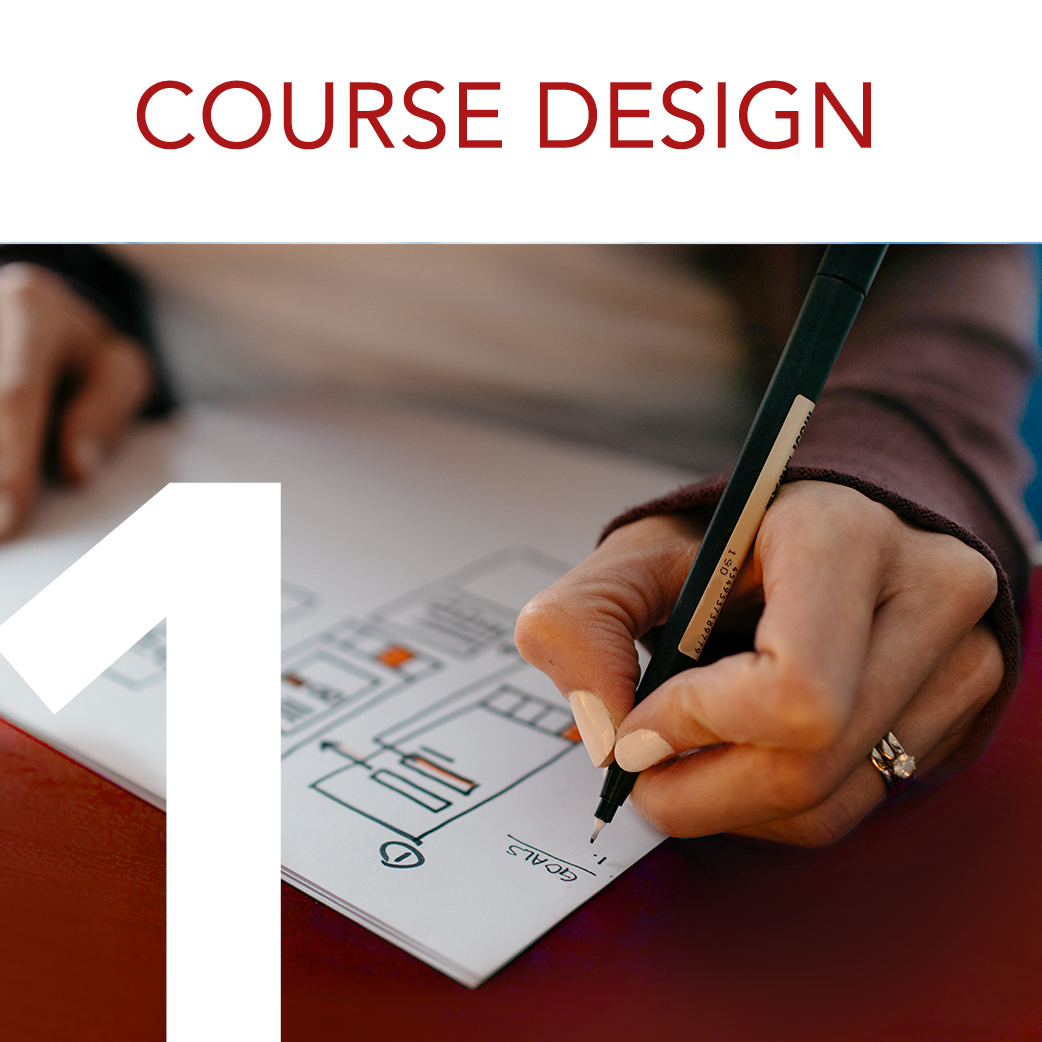Part 1 Course Design – Introduction
 All of the pages in Part 1 of the CDR explore the online course development that happens long before the semester begins. These activities fall into two categories: big picture course design and module planning.
All of the pages in Part 1 of the CDR explore the online course development that happens long before the semester begins. These activities fall into two categories: big picture course design and module planning.
Big picture course design is when you set the overall structure of the course which results in a complete syllabus. These tasks include:
- Setting course-level goals & objectives.
- Determining key milestones, assessments, recurring learning activities.
- Considering accessibility issues and create a plan for universal access.
- Seeking out resources and support, learn about the tools you will be using in your teaching.
For a more in-depth look at course design, check out this teaching guide from the Vanderbilt CFT.
If you have already designed your course and are starting your online course development process with a completed syllabus, consider exploring this guide on syllabus design to audit your syllabus before you move into module building.
Module planning and building translates all the details about your course from the syllabus into the online structures your students will encounter. These tasks include:
- Assigning module-level objectives, topics, materials, and resources.
- Deciding on a consistent module structure.
- Leveraging strategies for maximizing presence and interaction online.
- Building out the gradebook and other core tools like rubrics, groups, assignments, and discussions.
- Assembling materials using a mix of readings, videos, and other media, both instructor created content and content created by others available through the library or on the internet.
- Building out modules linking all course elements through a central content area.
For a detailed roadmap to turning your syllabus into a Brightspace course including links to step-by-step guides for using different tools, check out this blog post on the CFT Brightspace site.
Part I of the CDR will walk you through some of the key issues in module design and building. Click on a topic below to go directly to resources on that issue, or click the big arrow at the bottom of this page to work through all the topics in order.
An Instructional Design Perspective
Online Course Module Structure
Design, Consistency, and Access
Bringing Materials into your Course
Creating your Own Course Materials
Branching Out with Interactive Scenarios
Fine-Tuning and Sharing the Course with Students

This page is licensed under a Creative Commons Attribution-NonCommercial 4.0 International License.


